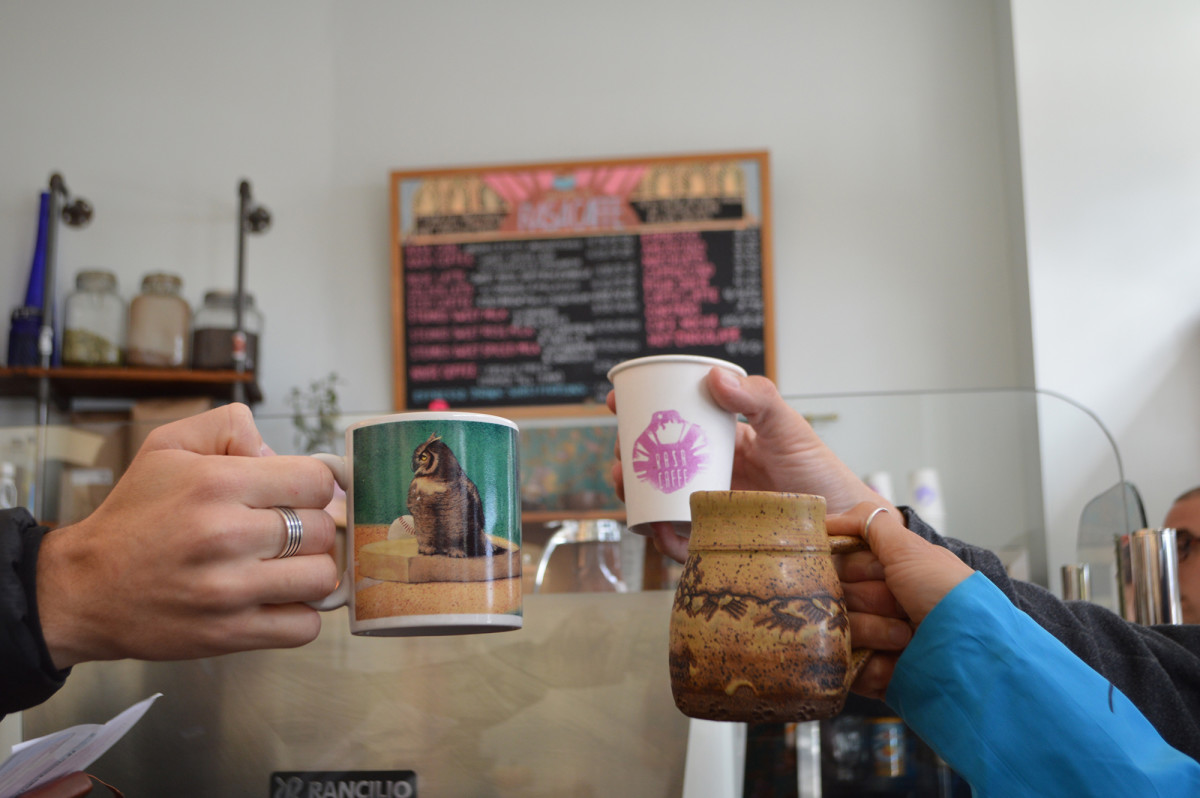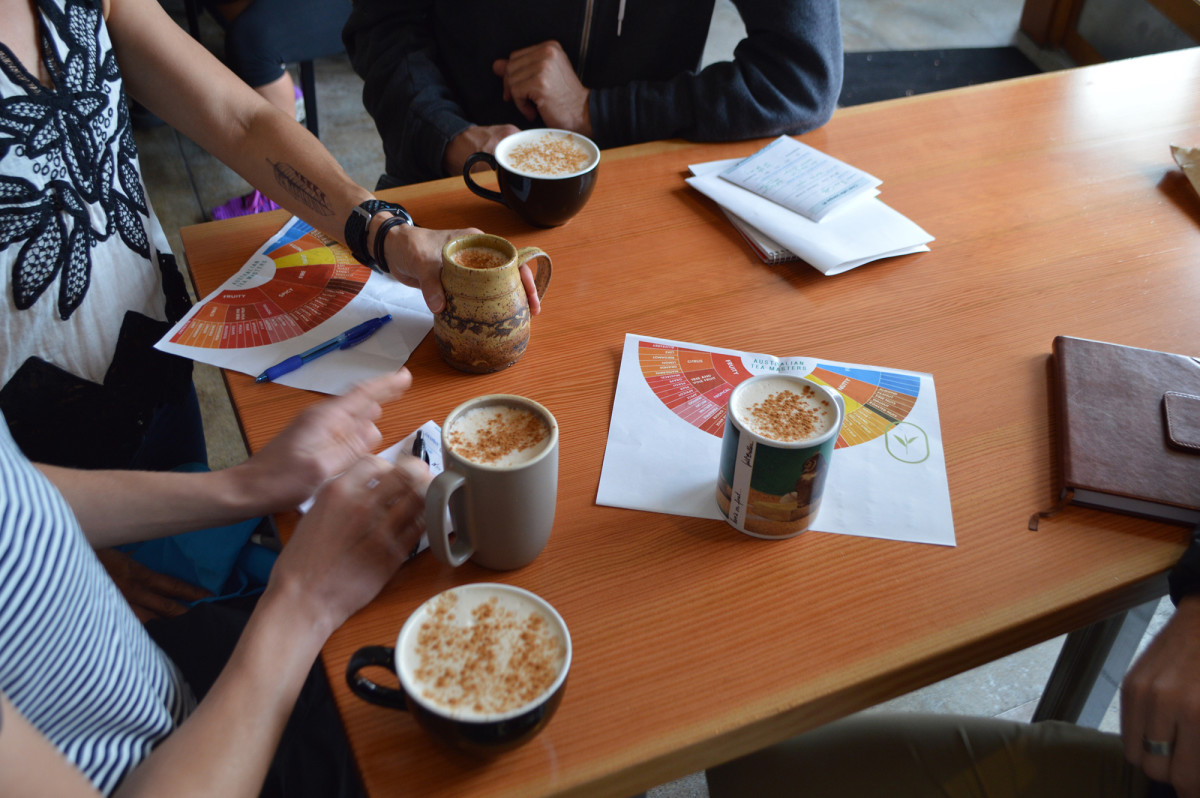Inside the Making of the GU Energy Gels That Power Your Run

Flavor fatigue can spell impending doom for endurance athletes. The key to endurance sports is balancing the nutrition equation: energy, electrolytes and water consumed must match those used or sweated out. You need to be able to stomach eating and drinking whatever it is you are eating and drinking, and keep stomaching that. Fall even slightly behind, and you might be spiraling down the path to failure, finishing off the podium, or simply not finishing at all.
“Athletes experience flavor fatigue all the time,” says Magda Boulet, vice president of innovation, research and development at GU Energy Labs. Boulet competed in the marathon for Team USA at the Beijing 2008 Olympic Games and won the Western States 100-mile ultra-marathon in 2015. “We’ve seen hands on from crewing people in races where they’ll swear by one flavor and then halfway through suddenly their favorite flavor becomes their enemy,” she says.
Boulet recently ran—and won—the Marathon des Sables, a six-day, 250-mile race across the Sahara Desert in Morocco. Many of her fellow competitors, faced with the challenge of carrying all of their food, brought meals of instant mashed potatoes. Logically, that made sense. The dried potatoes were lightweight, easily mixed into something approaching real food with water rations, and packed a lot of carbohydrate energy. Psychologically, eating plain mashed potatoes day after day became a real struggle. Boulet brought flavor packets (cheese, curry, etc.) to add to hers. “Every night I had a different flavor,” she says. “That made a huge difference.”
The simplest solution to flavor fatigue is to bring more flavors. The $500 million energy gel market is made up of dozens of companies, including major brands like CLIF, Honey Stinger and Science in Sport. Perhaps the most obvious differentiator between GU and its competitors is variety: GU boasts two-dozen variations of its energy gels, ranging from typical citrus flavors all the way to s’mores and birthday cake (2018 is GU’s 25th anniversary). And every year, GU retires one or more of those flavors and develops new ones.
Last fall, GU invited SPORTS ILLUSTRATED behind the scenes of its flavor-design process. Inside the company’s Berkeley, Calif., headquarters, a small cluster of rooms require additional key card access, an extra layer of security to keep out prying taste buds. Food pyramids decorate the walls of Boulet’s office, and books on nutrition and food science fill the shelves. Filed away out of sight are the detailed recipes for all of GU’s products. A laboratory doubles as a kitchen, complete with a stove and food mixer.
Boulet’s hypothesis, and the driving force behind GU’s explosion of flavors, is that the right food can work like a mental tool to spark your enthusiasm when your spirits might be flagging. “There is that art to fuelling and that is where you fuel to put a smile on your face,” she says. “It’s like your reward. It’s something that you look forward to.”
The flavor Boulet’s team began working on late last year was chai latte—the milky blend of tea and spices originally from India that fits somewhere in the same indulgent drink category as latte and hot chocolate. They were searching for an energy-boosting flavor that could transport someone away from a challenging workout or race to the memory of, perhaps, being huddled up in a warm café sipping chai with friends. “There’s always a personal story to a flavor,” Boulet says. “I grew up in Poland. We always drank tea with milk, and it was always a time when you got it with someone.”
To determine what mixture of flavorings might go into a chai latte gel, Boulet and several members of her innovation team set out to explore what local cafes in the East Bay served on a chilly day in mid-November. Among the tasters were Brandon Kirchmeyer, a food scientist and the chai latte project lead, and innovation manager Caitlin Trahan.

The group tried a spicy, unsweetened chai from Rasa Caffe, a tiny storefront in Berkeley with a sign on the wall that read PEACE HEALS, WAR KILLS. Further south in Oakland in a bigger store called Julie’s, the chai was foamier, slightly sweet and served with a dusting of cinnamon. At a window counter called 1888 Coffee Station near the shore of Lake Merritt, the chai came with a hint of jalapeno pepper.
The last stop was Modern Coffee, a chic cafe on the ground floor of the Tribune Tower, the old home of the now defunct Oakland Tribune newspaper in downtown Oakland. Modern Coffee’s chai was much sweeter than the others, with strong cardamom notes and peppery spiciness, perhaps the closest match to what might work well in an energy gel.
Trahan also experimented with making chai tea from scratch, using a recipe from a cookbook called Indian for Everyone by Anupy Singla. “It’s helpful to calibrate yourself,” Trahan explains. She mixed up a spice blend of peppercorns, cinnamon, cloves, fennel seeds, green and black cardamom pods and ginger powder, then boiled this with black tea in a mixture of water and milk.
By mid-December, Kirchmeyer was busy evaluating a couple dozen variations of chai latte flavorings that he’d ordered from four of GU’s suppliers. Each sample was mixed into a standard energy gel base and taste tested on GU employees.
In GU’s kitchen lab, small glass flasks were filled with gel the approximate look and texture of golden creamed honey and marked with cryptic codes to ensure no one was subconsciously biased to vote for a particular version based on its name. Testers sampled each using small plastic spoons and scribbled down their thoughts and preferences.
The process of fine-tuning the flavor tends to be iterative, with rounds of taste testing interspersed with requests to GU’s suppliers for tweaks and adjustments. “It’s a lot of trial and error,” says Kirchmeyer, who joined GU eight years ago. “When I first started it took me a long time to understand what do I need to do to bring out certain notes of certain flavors.”

The energy gel base also has its own taste that will affect the final flavor of the product and GU often tweaks the ingredients in the base to better fit the desired flavor. Sodium, added to help replenish the main electrolyte lost through sweat, is salty. Amino acids like leucine and valine, which are part of the protein rebuilding process, are bitter. Citric acid, an antioxidant that can neutralize free radicals generated during energy production, is sour. Caffeine has been shown to boost exercise performance and it has a bitter taste. And while the carbohydrates fructose and maltodextrin are both sweet, fructose is sweeter. (GU uses two types of carbohydrate to maximize the body’s energy take up because they are absorbed via different pathways.) Adjusting the balance of those carbohydrates can alter how sweet the gel is without changing the total calories it contains. Too much of a spicy kick, or too much sweetness, might make the gel hard to quickly swallow, and a lingering aftertaste might be unappetizing and could deter an athlete from fueling sufficiently during a long workout.
Says Boulet: “You have to take the product and go out because your taste buds are a lot more sensitive and you’ll experience the chai latte during exercise in a very different way than you would at a table.”
